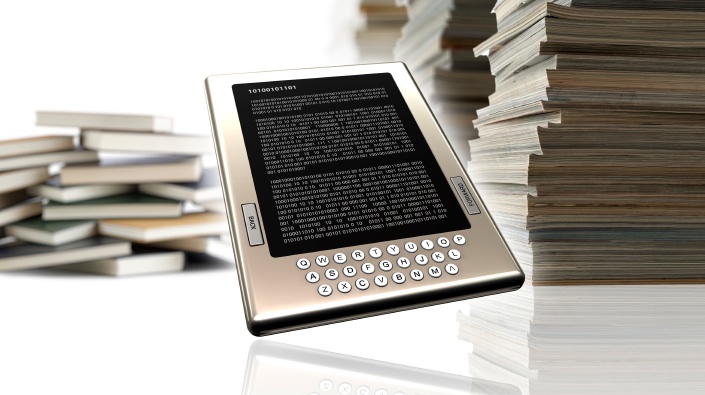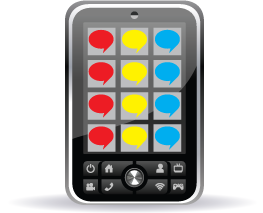
by John Fotheringham
Just as the printing press democratized access to the written word, ebooks are again revolutionizing how information is produced, distributed and consumed. Even successful authors, whose very livelihoods have depended on the sale of dead-tree books (e.g. Timothy Ferriss, author of The 4-Hour Workweek and The Four-Hour Body, and Seth Godin, author of Tribes, Permission Marketing, and All Marketers are Liars) have seen the writing on the literary wall, and agree that “print is dead”, or at least “dying fast”…
Here are a few reasons why the ebook is beating print books to a “pulp” (pun intended):
- Lower Production & Distribution Costs: This allows for lower retail prices, putting books in the hands of more and more readers. And many ebooks are available at no cost at all, including literary classics no longer covered by copyright (e.g. Project Gutenberg) and new works that are free by choice (this is one of the common “freemium” strategies where an ebook is used for free marketing to promote other paid content or services.)
- Read Anytime, Anywhere: You can literally carry thousands of ebooks with you on your mobile device or ebook reader. Language learning is then just a click away whether you are on the bus, a plane, or bored to tears in a meeting. And if you forgot to download books at home, you can always download more on the go via WiFi or even 3G networks.
- More Time Efficient: Many ebook readers allow you to easily cut and paste words and even look up unknown terms using built in dictionaries. This can save the learner hours and hours, especially in ideographic languages that usually require looking up characters by strokes, radicals, or handwritten input.
So now that I’ve made the case for ebooks, let’s look at my two favorite weapons of choice for using ebooks in foreign language learning:
Best Ebook Readers
There are heaps of ebook reader devices on the market today (the Amazon Kindle, the iPad, the Sony PRS series, the Barnes & Noble Nook, etc.), as well as numerous ebook reader apps available for Android devices, iPhones, iPads, iPod touches, Blackberry devices, PCs and Macs. After trying out hundreds of different devices at last year’s CES and stealing…I mean “borrowing”…a few of my friend’s devices for further testing, here are my two finalists:
1st Place: The Amazon Kindle 3G
Price:
- Kindle 3G: $189 USD
- Kindle (WiFi version): $139 USD
Where to get ‘em: Available from Amazon.com
While I am a full-fledged Apple fanboy, I must give Amazon credit where credit is due. Despite serious competition from the Apple iPad, Sony’s various ebook readers, and myriad other me-too products, the Kindle remains a hot seller, and my humble opinion, the world’s best ebook reader.
Here’s what I love most about the Kindle:
1) E ink is easy on the eyes and your battery. Unlike the pixels used on computers and smartphones (which can wreak havoc on your eyes and zap your battery), the Kindle’s use of E Ink creates a reading experience pretty darn close to physical books, all while consuming very little battery life. They accomplish this amazing feat by employing millions of itsy-bitsy, electronically charged “microcapsules”, within which there are tons of little black pigment pieces and white (or rather, light gray) pigment pieces. Text is produced by causing the black pigments to run to the top of specific microcapsules, while the background is created when the gray pigment is forced to the top. The Kindle display is also much easier to read outside in the sun, while most other devices (including the iPad, iPhone, and iPod touch) suffer from serious glare problems.
2) Direct access to the world’s largest book store pretty much anywhere in the world. Users can wirelessly access over 750,000 ebooks, plus heaps of audiobooks, newspapers, magazines and blogs, in over 100 countries worldwide. And unlike the iPad, the 3G wireless connectivity is provided free of charge.
3) Great Apple and Android apps. If you don’t want to fork over the funds for a Kindle, or you already own one but don’t feel like lugging it around all the time, you can always just download the Kindle app.
Download the free Kindle app (Android, Apple iPhone, iPad, iPod touch, Blackberry, PC, or Mac)
2nd Place: iBooks on the Apple iPad, iPhone & iPod touch
Prices:
- iBooks: free download in iTunes
- iPod touch: $229 USD (8GB), $299 (32GB), and $399 (64GB)
- iPad (WiFi): $499 USD (16GB), $599 USD (32GB), and $699 USD (64GB)
- iPad (3G): $629 USD (16GB), $729 USD (32GB), and $829 USD (64GB)
Where to get ‘em: Apple retail stores, the Apple Online Store, Amazon, Target, WallMart, AT&T Stores, Verizon Stores (iPad is available now; iPhones will allegedly be available through Verizon in early 2011…).
1) More than JUST an ebook reader. My only gripe with the Kindle is that it is only an ebook reader. With the iPad, iPhone, or iPod touch, on the other hand, your device is only limited by the apps you download to it. I currently have about 100 hundred apps on my iPod touch, including Skype for calling tutors and language partners, Evernote for keeping notes of new words and phrases, iLingQ, ChinesePod, SpanishPod, and on, and on, and on…
2) Sexy, intuitive user interface. The Kindle interface isn’t bad by any measure, but it pales in comparison to the rich, elegant design of Apple iBooks. The new “retina display”, available on the iPhone 4, iPod touches (4th gen), and likely the next vesion of the iPad, creates extremely crisp, vivid images, and makes reading text far easier than on lower resolution devices.
3) Excellent built in dictionary, bookmarks, highlighting and search features. iBook’s built in dictionary, bookmarks and highlighting tools are a thing of beauty. To look up a term, you need simply tap the word and then click “Dictionary” from the pop-up menu. To highlight, you again just tap a word and then drag the handles to the left or right to select the words or sentences you want. Bookmarking requires just a quick tap in the upper right corner. Best of all, you can then quickly go back to your saved highlights or bookmarks using the table of contents tab. Also, you can use the search feature to quickly find all instances of a particular word (a very useful feature for language learners as it allows you to quickly see how a particular word is used in context.)
Getting the Most Out of Ebook Readers
As we’ve seen, ebooks and ebook readers are wonderful language learning tools indeed. But as ESLpod’s Dr. Jeff McQuillan puts it, “A fool with a tool is still a fool.” Here then, are some tips on how to best apply these amazing new tools.
1) Don’t fall into the trap of reading more than you listen. Reading is an important part of language acquisition, and is an essential component of learning how to write well in a foreign language. But remember that listening and speaking should be the focus of language study, especially in the early stages of learning. It is all too easy to spend too more time with your nose in a book than listening to and communicating with native speakers, especially for introverts and those who have been studying for too long with traditional, grammar and translation based approaches.
2) Read an entire page before looking up unknown words. Lest you get distracted and lost in the details, I suggest making at least one full pass through each page in your ebook before looking up unfamiliar words.
3) Choose books that are just a tad beyond your comprehension level. By “comprehensible” I mean that you can understand about 70 to 85% of the text. Too far above or below this and you will quickly get bored and likely give up.
4) Use the Kindle’s Text-to-Speech Tool. The Kindle and Kindle 3G can literally read English-language content out loud to you. Use this feature when you are doing other tasks that require your vision but not your ears, and as a way of building your listening comprehension. I suggest listening to a passage first and then reading to back up your comprehension.
5) Get audio book versions of ebooks you read. While the Kindle’s text-to-speech tool works well, it can get a bit monotonous with its robotic pronunciation. For longer books, I suggest buying the audio book version the book, which tend to be read by professional voice actors, and are therefore far easier to listen to… Audio books are available from Audible, iTunes, and countless other site, and make sure to check out the free Audiobooks app for the iPhone, iPad and iPod touch.
]]> The iPod Touch, and it’s big brother the iPhone, are perhaps the best language learning tools to date. Their portability and massive storage allow you to carry around your immersion with you no matter where you are in the world or how busy you may get at work or home. In addition to the benefits of downloading podcasts onto your iPod (which can be listened to on any portable media player or computer by the way), the iPod Touch and iPhone allow you to choose from literally thousands of applications (called “Apps” in the new tech vernacular). Most of the apps are free, with paid versions usually costing only a dollar or two.
The iPod Touch, and it’s big brother the iPhone, are perhaps the best language learning tools to date. Their portability and massive storage allow you to carry around your immersion with you no matter where you are in the world or how busy you may get at work or home. In addition to the benefits of downloading podcasts onto your iPod (which can be listened to on any portable media player or computer by the way), the iPod Touch and iPhone allow you to choose from literally thousands of applications (called “Apps” in the new tech vernacular). Most of the apps are free, with paid versions usually costing only a dollar or two.
Here is 5 top list of apps well suited for language learning:
1. Google Mobile (Free)
In addition to all the other uber-useful and always free Google tools (Gmail, Calendar, Docs, Tasks, Reader, News, etc.), the Google Mobile app takes you right to the world’s best translation software: Google Translate.
Features:
- Clean, easy to use interface
- Translate a single word, phrases or entire webpages
- Search by text or voice
- Google’s propriety translation algorithm produces surprisingly accurate translations
Download Google Mobile from the iTunes Store
___________________________________________
2. Wikipanion (Free & Pro Versions)
Wikipedia articles are a great source of reading input that fits your exact personal interests (in language learning, interest trumps all!) The problem is that viewing the normal Wikipedia site is bit tedious on smaller devices. To make things a little easier, Wikipanion repackages the content of Wikipedia into a streamlined mobile interface.
Features:
- Easy to view related articles
- Offline browsing (Plus)
- Add articles to the que for later reading
Download Wikipanion from the iTunes Store
___________________________________________
3. eReader (Free)
Don’t want to shell out another few hundred bucks for a Kindle? No problem! Just download eReader and view thousands of free and for sale ebooks.
Features:
- Choose from a variety of color combinations to make reading easy on your eyes (e.g. dark on light in bright rooms and light on dark in darker rooms)
- Annotate the text: add notes, bookmarks, highlights, etc.
- Read with one hand using the autoscroll feature
Download eReader from the iTunes Store
___________________________________________
4. Apple Voice Memos (part of iPod OS 3.1)
Language learners have long known about the benefits of recording conversations to later check their pronunciation and review difficult to understand sections of a conversation. The problem is that people get nervous when they know you are recording them. Using Apple’s high quality headphone mic and Apple Voice Memos, you can discreetly record yourself or others without anyone knowing.
Features:
- Ultra cool user interface with retro mic and voltage meter
- Easily email voice recordings
- Trim, rename and classify recordings
Read more about OS 3.1 on the Apple website
___________________________________________
5. Skype (Free)
The amazing VOIP (voice over IP) power of Skype is now available on iPod Touches and iPhones. Don’t rack up your cell phone minutes; use Skype’s instead. It’s free to call people when they’re online and very cheap to call normal phone numbers. You can even text now.
Features:
- Free calls and instant messages to Skype users
- Cheap calls and texting to everyone else
- Syncs your Skype contacts
Download Skype from the iTunes Store
___________________________________________
]]>